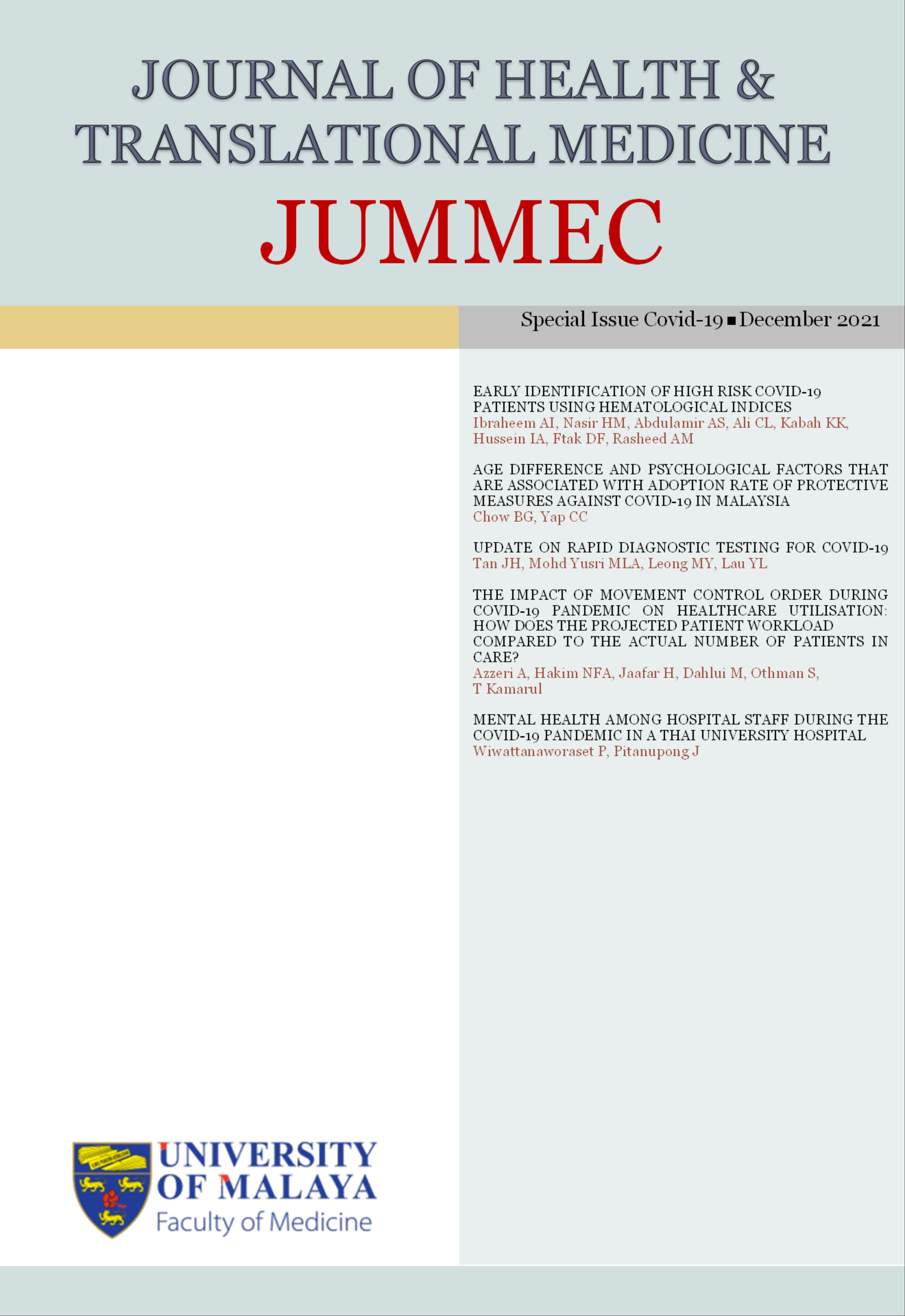AGE DIFFERENCE AND PSYCHOLOGICAL FACTORS THAT ARE ASSOCIATED WITH ADOPTION RATE OF PROTECTIVE MEASURES AGAINST COVID-19 IN MALAYSIA
Received 2021-06-23; Accepted 2021-07-21; Published 2021-10-14
DOI:
https://doi.org/10.22452/jummec.sp2021no1.2Keywords:
Age Difference, COVID-19 in Malaysia, Protection Motivation Theory, Psychological PredictorsAbstract
Purpose: The COVID-19 pandemic has threatened the livelihood of more than 140,000 individuals in Malaysia. The adoption of protective measures, such as social distancing, wearing face masks, and increasing hygiene levels, is crucial to contain the disease among the general public. This study answered two research questions: what psychological factors are associated with the adoption of protective measures; and, is there an age difference in the adoption of protective measures against COVID-19 in Malaysia.
Methodology: 310 individuals between 18 and 65 years old (M=31), who were staying in Malaysia during the 2020 Movement Control Order, were recruited to answer an online survey assessing perceived severity, perceived vulnerability, perceived self-efficacy in adopting protective measures and perceived anxiety and number of protective measures adopted against COVID-19. One-way ANOVA and standard multiple regression were conducted to analyse the data.
Results: Perceived self-efficacy in adopting protective measures and perceived anxiety were significant predictors of adoption of protective measures, while perceived severity and perceived vulnerability were not. The older adult group (≥37 years) was found to adopt significantly more protective measures compared to younger adult groups.
Conclusion: Perceived self-efficacy in adopting protective measures and perceived anxiety were significant predictors of adoption of protective measures, while adult’s ≥37 years adopted significantly more protective measures compared to younger adults in Malaysia during COVID-19. The relevant authorities can utilize the results of this study to create more relevant interventions and target them towards the younger population, in order to promote the adoption of protective behaviors against COVID-19 in Malaysia.
Downloads
Downloads
Published
Issue
Section
License
All authors agree that the article, if editorially accepted for publication, shall be licensed under the Creative Commons Attribution License 4.0 to allow others to freely access, copy and use research provided the author is correctly attributed, unless otherwise stated. All articles are available online without charge or other barriers to access. However, anyone wishing to reproduce large quantities of an article (250+) should inform the publisher. Any opinion expressed in the articles are those of the authors and do not reflect that of the University of Malaya, 50603 Kuala Lumpur, Malaysia.


